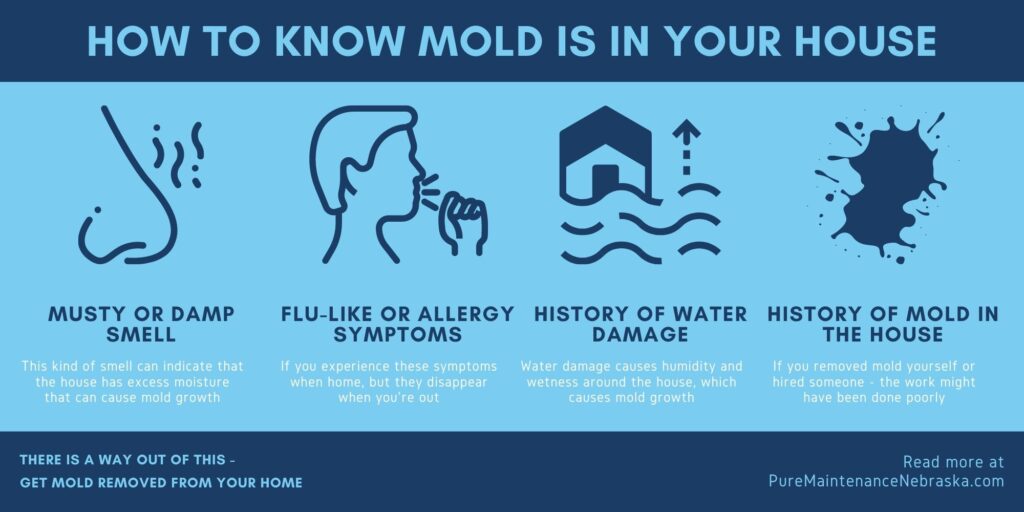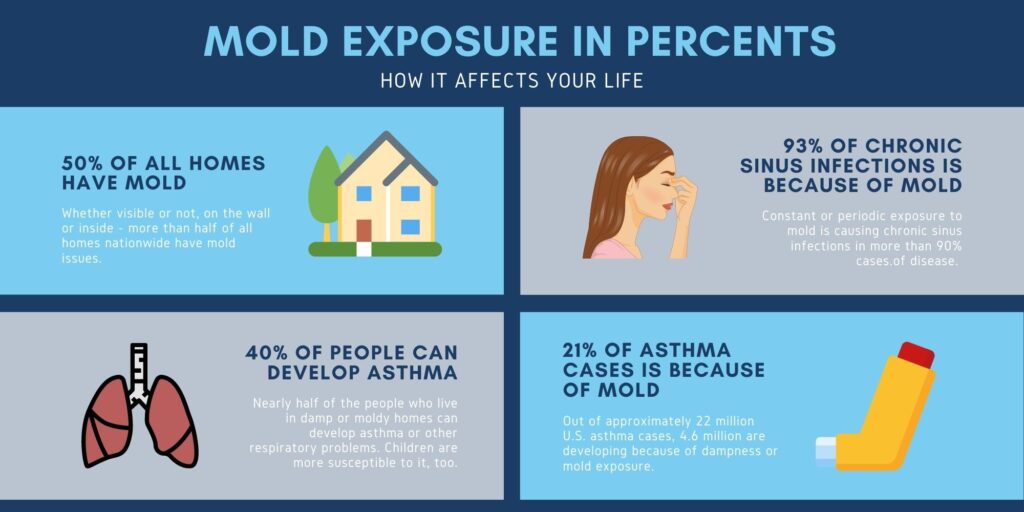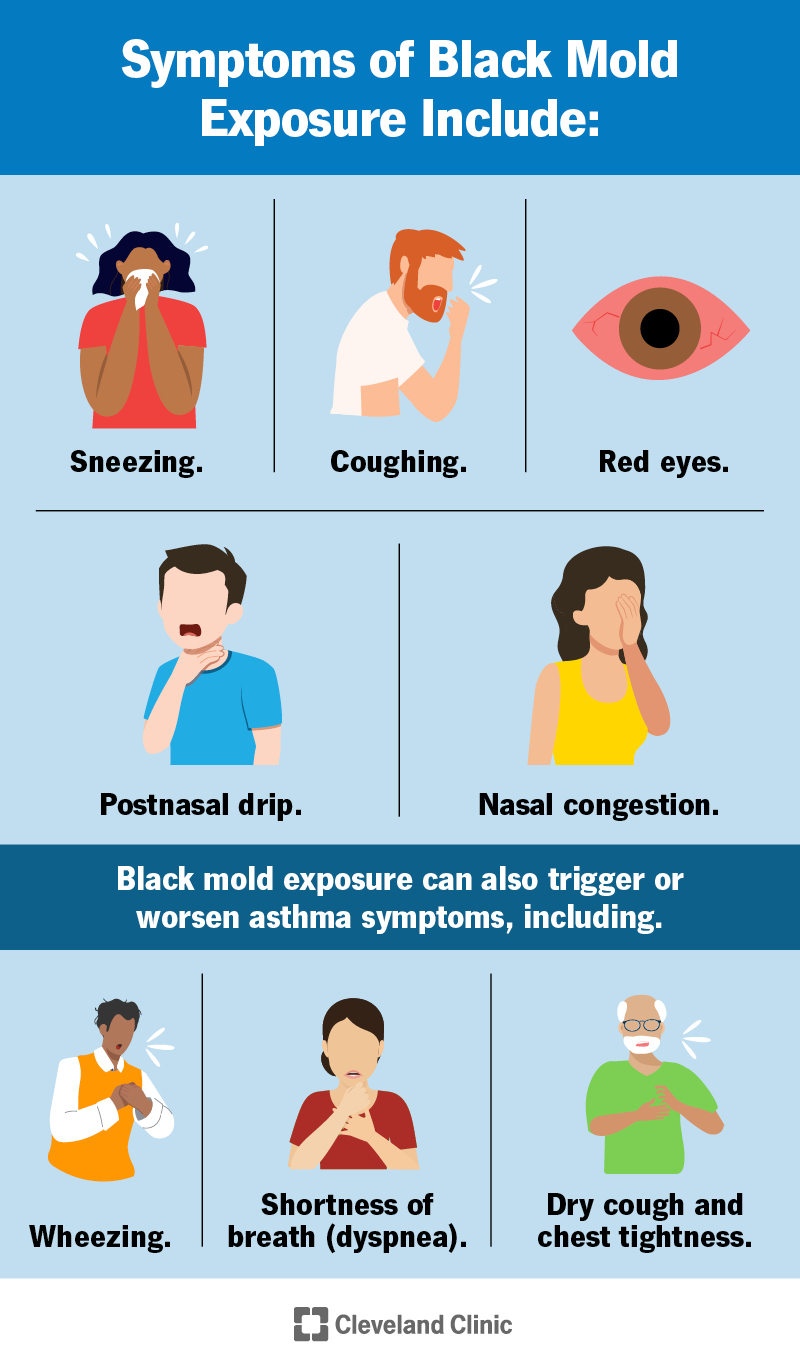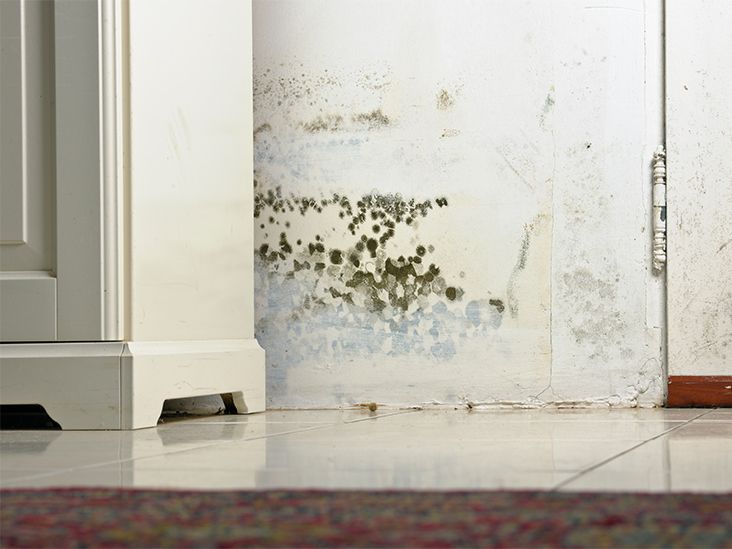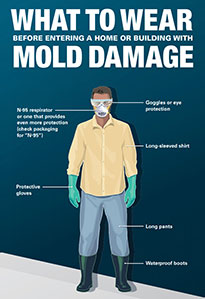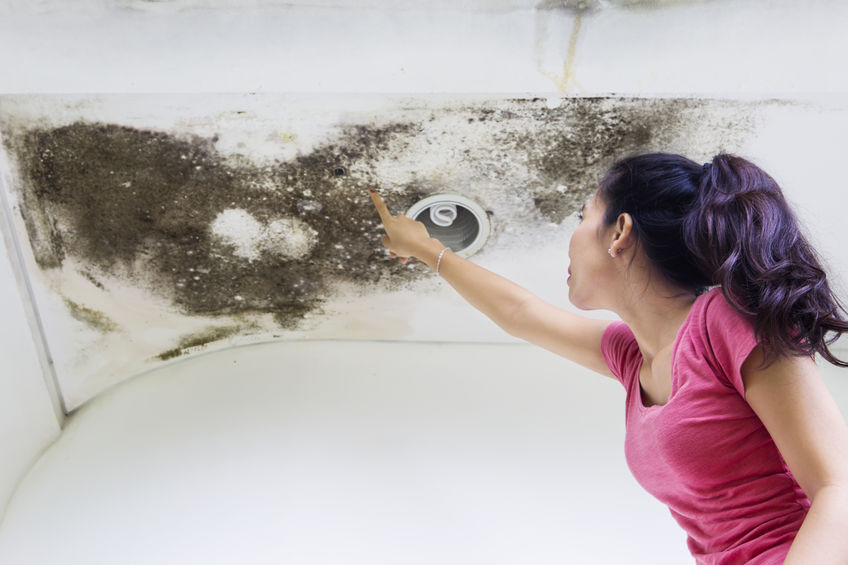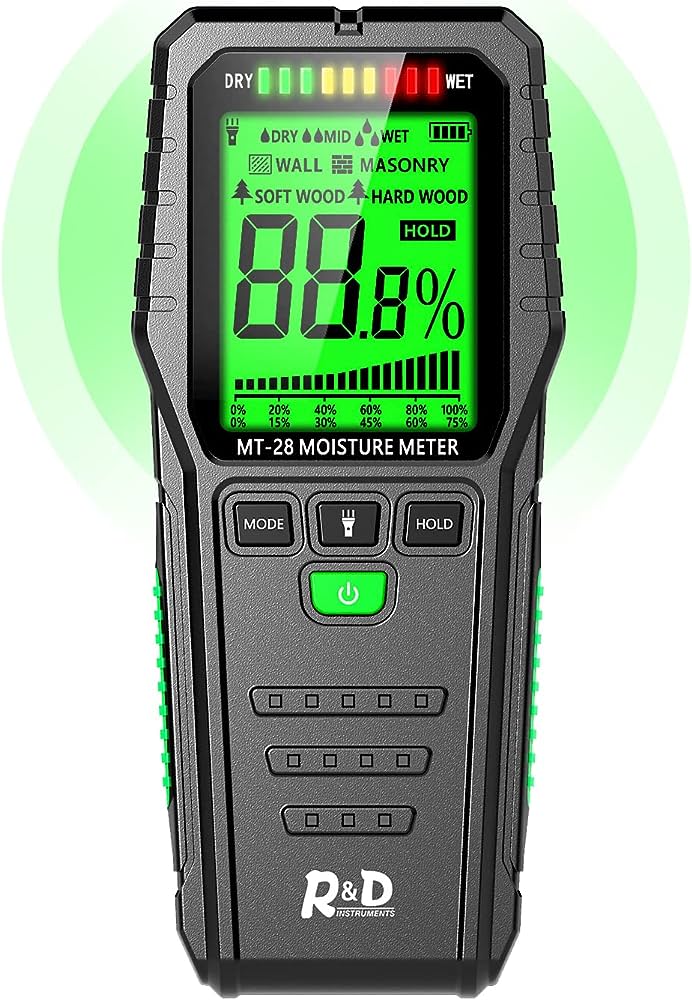If you have been feeling unexplained symptoms lately, it’s possible that mold could be the culprit. Mold sickness is a condition that occurs when individuals are exposed to mold and its spores, leading to a range of health issues. From respiratory problems to allergic reactions, this article will explore the signs and symptoms of mold sickness, helping you recognize and address any potential health concerns. So, if you’ve been experiencing unexplained health issues, keep reading to learn more about the signs of mold sickness and how to take care of yourself.
Common Symptoms of Mold Sickness
Respiratory Problems
One of the most common symptoms of mold sickness is respiratory problems. If you find yourself frequently coughing or experiencing difficulty in breathing, it could be a sign of mold exposure. Mold spores can irritate the airways and lead to respiratory issues such as asthma, bronchitis, and even pneumonia.
Nasal Congestion
Another telltale sign of mold sickness is nasal congestion. If you constantly find your nose blocked or have difficulty in breathing through your nose, mold could be the culprit. Mold spores can cause inflammation in the nasal passages, leading to congestion and difficulty in breathing.
Coughing and Wheezing
While occasional coughing may not be a cause for concern, persistent coughing and wheezing should not be ignored. Mold can trigger allergic reactions in some individuals, causing them to cough and wheeze. If these symptoms worsen when you are indoors or in certain environments, it’s worth considering mold as a possible cause.
Eye Irritation
If you experience redness, itching, or watery eyes, mold exposure may be to blame. Mold spores can irritate the eyes, leading to discomfort and potential long-term damage if left untreated. Eye irritation is a common symptom of mold sickness and should not be ignored.
Skin Rashes and Allergies
Mold can also manifest itself through skin rashes and allergies. If you notice unexplained skin irritations, itching, or hives, mold may be the underlying cause. Mold spores can trigger an allergic reaction, leading to skin symptoms in some individuals. It’s important to pay attention to any changes in your skin and seek medical attention if necessary.
Headaches and Fatigue
Feeling constantly tired and experiencing frequent headaches can be signs of mold sickness. Exposure to mold can lead to an increased production of inflammatory substances in the body, which can result in headaches and fatigue. If you notice a correlation between being in certain environments and experiencing these symptoms, it’s worth considering mold as a potential cause.
Sensitivity to Odors
If you find yourself more sensitive to odors than usual, it could be a sign of mold sickness. Mold emits a distinct musty odor, and individuals who are exposed to mold regularly may become more sensitive to smells. If you notice a strong smell in certain areas of your home or workplace, it’s important to investigate further and consider the possibility of mold growth.
Digestive Issues
Mold sickness can also affect the digestive system, leading to issues such as nausea, vomiting, and diarrhea. Ingesting mold or mold-contaminated food can cause gastrointestinal symptoms in some individuals. If you consistently experience digestive problems without a clear cause, mold exposure might be a factor worth considering.
Muscle and Joint Pain
Unexplained muscle and joint pain can also be associated with mold sickness. Mold-induced inflammation can affect the musculoskeletal system, leading to discomfort and pain. If you experience persistent muscle or joint pain, especially when in certain environments, it’s important to explore the possibility of mold exposure as a potential cause.
Neurological Symptoms
In some cases, mold exposure can even affect the nervous system, leading to neurological symptoms. These symptoms can include difficulty concentrating, memory problems, dizziness, and even seizures in severe cases. If you notice any changes in your cognitive function or experience unexplained neurological symptoms, it’s crucial to seek medical attention and consider the possibility of mold sickness as a potential cause.
Serious Health Effects of Mold Exposure
Asthma Attacks and Exacerbation
For individuals with asthma, mold exposure can trigger asthma attacks and exacerbate existing symptoms. Mold spores can irritate the airways and cause inflammation, leading to breathing difficulties and potentially life-threatening situations for asthmatics. If you have asthma and notice an increase in symptoms when in certain environments, mold exposure should be investigated as a possible cause.
Sinus Infections
Mold exposure can also increase the risk of developing sinus infections. Mold spores can irritate the nasal passages and sinuses, leading to inflammation and providing a breeding ground for bacteria. This can result in recurring sinus infections, which can be chronic and difficult to treat. If you find yourself frequently suffering from sinus infections, mold exposure could be a contributing factor.
Bronchitis and Pneumonia
Exposure to mold can also increase the risk of developing bronchitis and pneumonia. Mold spores can irritate the airways and weaken the immune system, making individuals more susceptible to respiratory infections. If you frequently experience respiratory infections and notice a correlation with certain environments, it’s essential to consider mold exposure as a potential cause.
Allergic Reactions
Mold is a common allergen and can trigger allergic reactions in susceptible individuals. These reactions can range from mild to severe, depending on the individual’s sensitivity. Symptoms can include itchy eyes, runny nose, sneezing, hives, and in severe cases, anaphylaxis. If you have a known mold allergy or experience allergic symptoms in certain environments, mold exposure should be investigated.
Pulmonary Hemorrhage
In rare cases, mold exposure has been linked to pulmonary hemorrhage, a condition characterized by bleeding in the lungs. This is more commonly seen in infants exposed to a specific type of mold called Stachybotrys chartarum. If you or a family member experiences unexplained bleeding from the lungs, it’s crucial to seek immediate medical attention and consider the possibility of mold exposure as a potential cause.
Sick Building Syndrome
Mold-infested buildings can contribute to a condition known as sick building syndrome. This syndrome is characterized by a range of symptoms, including headaches, fatigue, respiratory problems, and other potential signs of mold sickness. Sick building syndrome is often attributed to poor indoor air quality due to mold growth and can affect multiple individuals within a building. If you notice a pattern of symptoms in multiple occupants of a building, mold exposure should be investigated as a possible cause.
Immune System Suppression
Exposure to mold can weaken the immune system, making individuals more susceptible to infections and illnesses. Chronic mold exposure can lead to a state of immune system suppression, where the body’s ability to fight off infections is compromised. This can result in frequent illnesses, slow healing, and increased susceptibility to various diseases. If you find yourself frequently falling ill or notice a decline in your overall health, mold exposure should be considered.
Mycotoxicosis
Mycotoxicosis refers to the toxic effects of mold on the body. Some types of mold produce mycotoxins, which can be harmful when ingested or inhaled. Mycotoxicosis can cause a range of symptoms, including respiratory problems, neurological symptoms, gastrointestinal issues, and even organ damage in severe cases. If you have been exposed to mold and experience a combination of these symptoms, it’s essential to seek medical attention and inform your healthcare provider about your mold exposure.
Cognitive Impairment
Mold exposure has been associated with cognitive impairment and changes in brain function. Individuals exposed to mold may experience difficulty concentrating, memory problems, brain fog, and other cognitive issues. These symptoms can be disruptive and interfere with daily life. If you notice changes in your cognitive function that coincide with exposure to certain environments, mold exposure should be considered as a potential cause.
Infertility and Reproductive Problems
While the link between mold exposure and infertility is still being studied, some research suggests that mold can have adverse effects on reproductive health. Mold exposure has been associated with hormonal disruptions and reproductive issues in both males and females. If you are experiencing difficulties in getting pregnant or notice changes in your menstrual cycle, mold exposure should be taken into consideration as a possible factor.


Early Warning Signs of Mold in Your Environment
Visible Mold Growth
The most obvious sign of mold in your environment is visible mold growth. Mold can appear as black or green patches on walls, ceilings, floors, or even furniture. It thrives in moist environments and can spread quickly if left untreated. If you notice any signs of mold growth, it’s important to address the issue promptly to prevent further contamination and potential health risks.
Musty Odor
One of the distinct characteristics of mold is its musty odor. If you detect a strong, unpleasant smell in certain areas of your home or workplace, it could be a sign of mold growth. The musty odor is often described as earthy or damp and is commonly associated with mold-infested environments. If you notice this smell, it’s essential to investigate further and identify the source of the odor.
Water Damage or Moisture Issues
Water damage or moisture issues can create the perfect breeding ground for mold. If you have experienced leaks, floods, or excessive humidity in your environment, there is a higher likelihood of mold growth. Mold thrives in damp environments and can start growing within 24-48 hours of moisture exposure. If you have experienced water damage or suspect moisture issues, it’s crucial to address the problem promptly to prevent mold growth.
Condensation on Windows and Walls
Condensation on windows, walls, or other surfaces can be an indication of excess moisture in the environment. When warm, humid air comes into contact with cooler surfaces, condensation occurs. This excess moisture can contribute to mold growth if not properly addressed. If you consistently notice condensation in your environment, it’s important to investigate and take measures to reduce moisture levels.
Allergies or Respiratory Symptoms in Occupants
If occupants of a building frequently experience allergies or respiratory symptoms, it could be a sign of mold in the environment. Mold exposure can trigger allergic reactions and respiratory problems in susceptible individuals. If multiple individuals in the same space notice an increase in these symptoms, it’s important to investigate possible mold growth as a potential cause.
Poor Indoor Air Quality
Mold growth can negatively impact indoor air quality. Airborne mold spores can be inhaled and lead to respiratory symptoms and allergic reactions. If you notice a decline in indoor air quality, such as a stale or stuffy smell, increased dust accumulation, or visible signs of mold growth, it’s crucial to address the issue promptly. Poor indoor air quality can have adverse effects on occupants’ health and well-being.
Peeling Paint or Discoloration
Peeling paint or discoloration on walls, ceilings, or other surfaces can be an indication of moisture damage and potential mold growth. Mold can cause paint to bubble, crack, or peel off, and it can also cause discoloration, stains, or patches on surfaces. If you notice these signs, it’s important to investigate further and determine if mold is present.
Warping or Buckling of Wooden Materials
Excess moisture in the environment can cause warping or buckling of wooden materials. This can include wooden floors, furniture, or structural elements of a building. Mold thrives in damp conditions and can cause structural damage over time. If you notice any signs of warping or buckling, it’s important to address the moisture issue promptly to prevent further damage and potential mold growth.
Increased Humidity Levels
High humidity levels can create an ideal environment for mold growth. If you consistently measure high humidity levels in your environment, it’s important to take measures to reduce the humidity. Mold can start growing when the humidity exceeds 60%, so maintaining humidity levels below this threshold can help prevent mold growth.
Presence of Mold Spores in Air Sample
Air sampling can be conducted to determine if mold spores are present in your environment. This can be done by professionals using specialized equipment to collect air samples and analyze them in a laboratory. If mold spores are detected in the air sample, it confirms the presence of mold in the environment. Air sampling can provide valuable information about the extent of mold contamination and help guide remediation efforts.
How to Confirm Mold Sickness
Medical Assessment
If you suspect mold sickness, it’s important to seek medical assessment from a healthcare professional. A qualified medical professional can evaluate your symptoms, conduct a physical examination, and consider other potential causes before attributing the symptoms to mold exposure. They may also order further tests or refer you to a specialist if necessary.
Environmental Testing
Environmental testing can help confirm the presence of mold in your environment. This can involve taking samples of mold-infested materials, such as swabbing surfaces or collecting air samples. The samples are then sent to a laboratory for analysis, which can determine the type and concentration of mold present. Environmental testing can provide objective evidence of mold contamination and help guide remediation efforts.
Laboratory Analysis
Laboratory analysis of samples collected from your environment can provide valuable information about the type and concentration of mold present. This information can help determine the potential health risks associated with the specific mold species identified. Laboratory analysis can also help identify any mycotoxins that may be present, which can be useful in understanding the severity of the mold contamination.
Identifying Mold Sources
Identifying the source of mold growth is crucial in confirming mold sickness. A thorough inspection of the environment, including hidden areas such as behind walls or under carpets, can help identify areas of mold growth. It’s important to address the underlying moisture issue and remediate the mold source to prevent further contamination and potential health risks.
Professional Inspection
If you are unable to identify the source of mold growth or are unsure about the extent of contamination, it may be necessary to seek a professional inspection. Certified mold inspectors have the expertise and equipment necessary to assess the environment and identify mold sources. They can provide a comprehensive report detailing the extent of mold contamination and recommend appropriate remediation measures.
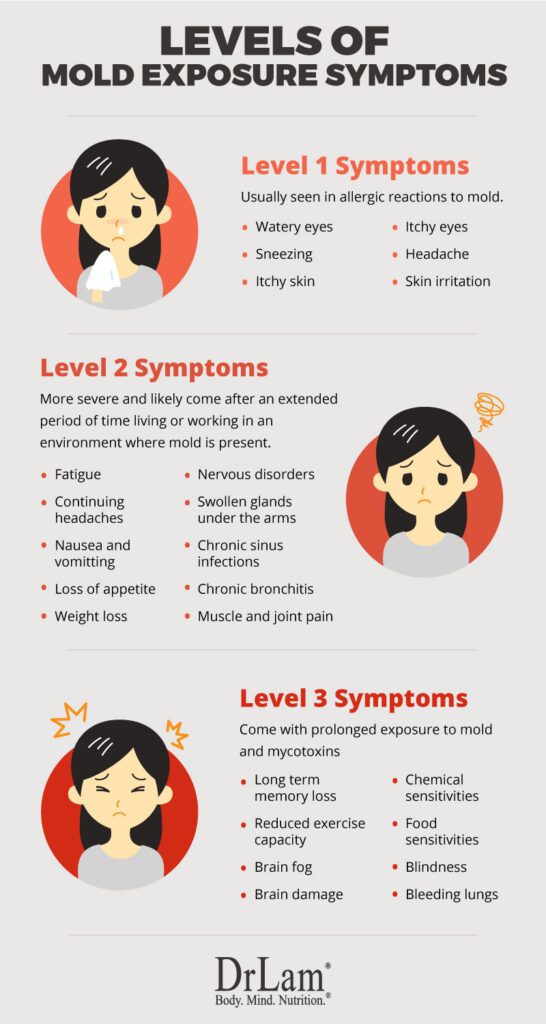

Prevention and Treatment of Mold Sickness
Maintain Proper Ventilation and Airflow
Proper ventilation and airflow are essential in preventing mold growth. Ensure that your home or workplace has adequate ventilation, especially in areas prone to moisture, such as bathrooms and kitchens. Use exhaust fans or open windows to allow fresh air to circulate and remove excess moisture.
Keep Indoor Spaces Clean and Dry
Regular cleaning and maintenance can help prevent mold growth. Keep indoor spaces clean and dry by regularly removing dust and debris and promptly addressing any spills or leaks. Regularly wipe down surfaces and ensure that moisture-prone areas, such as bathrooms and basements, are well-maintained and free from excess moisture.
Fix Plumbing and Roofing Leaks Promptly
One of the leading causes of mold growth is water damage from plumbing or roofing leaks. It’s crucial to fix any leaks promptly to prevent moisture from accumulating and creating an environment where mold can thrive. If you notice any signs of leaks, such as water stains or damp spots, it’s important to address the issue promptly and ensure proper repairs are made.
Use Dehumidifiers to Control Humidity
In areas with high humidity, using dehumidifiers can help control moisture levels and prevent mold growth. Dehumidifiers remove excess moisture from the air, making the environment less favorable for mold growth. Consider using dehumidifiers in basements, bathrooms, or any other areas prone to high humidity.
Regularly Inspect and Clean HVAC Systems
Heating, ventilation, and air conditioning (HVAC) systems can contribute to mold growth if not properly maintained. Regularly inspect and clean your HVAC systems to remove any dust, debris, or mold growth that may have accumulated. Consider scheduling professional maintenance to ensure that your HVAC systems are functioning efficiently and not contributing to mold contamination.
Wear Protective Gear during Mold Cleanup
If you need to clean up mold growth, it’s important to protect yourself from exposure. Wear appropriate protective gear, such as gloves, goggles, and respiratory masks, to minimize the risk of inhaling mold spores or coming into direct contact with mold. Proper protection can help prevent mold exposure and potential health risks.
Remove and Remediate Mold Sources
When mold is present, it’s important to remove and remediate the mold sources. This may involve removing affected materials, such as drywall or carpets, and thoroughly cleaning and disinfecting the area. Depending on the extent of contamination, professional mold remediation may be necessary to ensure proper removal and prevent further spread of mold spores.
Seek Medical Help and Treatment
If you suspect mold sickness, it’s crucial to seek medical help and treatment. Consult with your healthcare provider about your symptoms and potential mold exposure. They can provide appropriate medical advice, recommend tests if necessary, and guide you in managing your symptoms and overall health.
Consider Professional Mold Remediation
For extensive mold contamination or in situations where health risks are significant, professional mold remediation may be necessary. Certified mold remediation specialists have the expertise, equipment, and resources to safely and effectively remove mold and restore a healthy indoor environment. Consider hiring professionals to ensure proper remediation and prevent further health risks.
Prevent Future Mold Growth
Once mold has been remediated, it’s important to take steps to prevent future mold growth. This includes maintaining proper ventilation, promptly addressing any leaks or moisture issues, and regularly inspecting and cleaning your environment. Incorporate preventive measures into your routine to minimize the risk of mold recurrence.
Conclusion
Mold sickness can have a significant impact on your health and well-being. Recognizing the common symptoms and knowing how to confirm mold sickness is essential in addressing the issue promptly. By taking preventive measures, seeking appropriate medical help, and addressing mold sources effectively, you can minimize the risk of mold sickness and maintain a healthy indoor environment for yourself and those around you.
